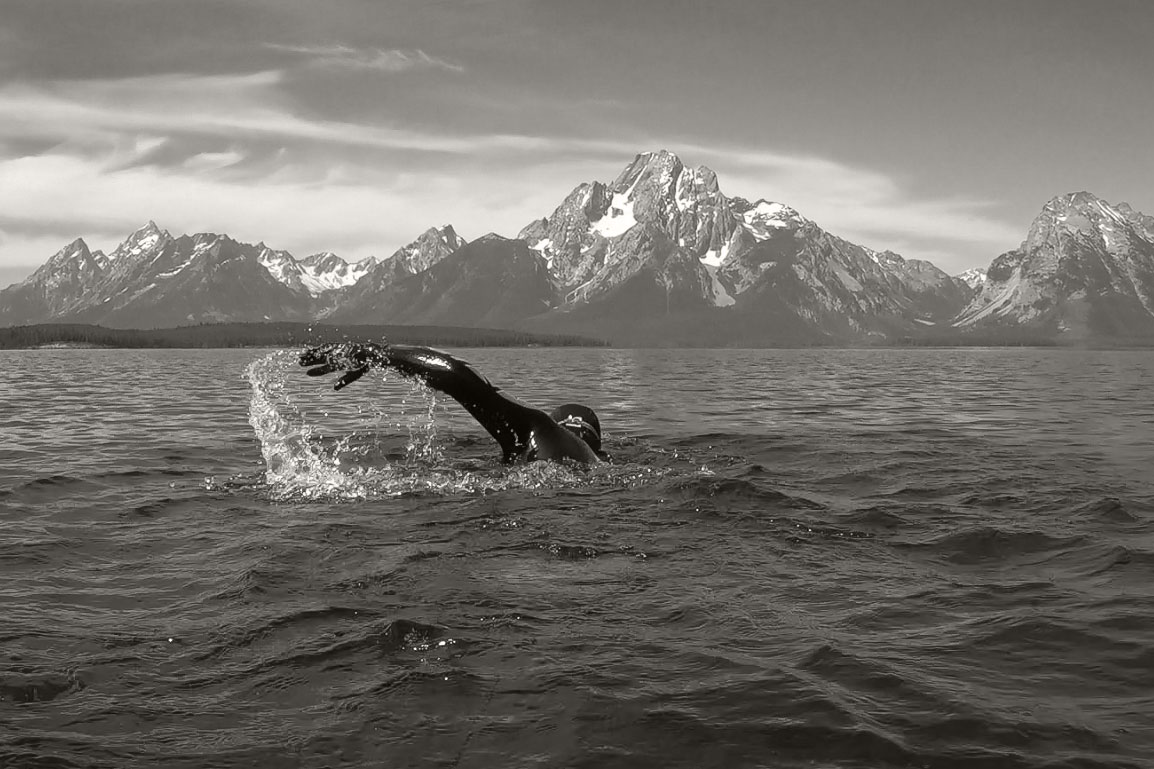A living flag atop #TetonPass, this #WhitebarkPine stands a half mile south of the parking lot, on the crest of Titmouse Ridge. If you’ve ever skied this ridge or dropped down the other side to Edelweiss, you’ve stripped your skins under her boughs. Given her size and slow growth rate, this tree could have lived for a thousand years before anyone arrived to surf her snowy skirts.
Check out her candelabra-like shape, every limb snaking upward. This is how whitebark have adapted to a dependence on Clark’s Nutcrackers for reproduction. To beckon these Industrious little birds, whitebark place heavy, stone-like cones at the ends of branches stretching for the sky. Often the tops of whitebark are flat, as if pruned like topiary; they may as well be serving trays for passing nutcrackers, who rip the cones apart in the tree tops, stuff the seeds in pouches under their beaks, then flutter to the ground and plant them in the duff.
Identical to the ones we eat, these pine nuts are the best source of durable protein in the #GreaterYellowstoneEcosystem, so they’re a dietary lynchpin for most animals in the alpine. Griz are known to scour the forest for cone piles left by nut-frenzied squirrels. Local archaeological digs tell us that archaic humans came to #JacksonHole for two primary resources: fish and pine nuts.
The high protein and fat content of these nuts is remarkable, considering that whitebark create them from thin air. Despite living at the highest elevations of any GYE plants, in the coldest temperatures, fiercest winds, and most meager soils, often drilling their roots into dry granite seams, these ecstatic forms lift seeds into the sky for other species to gather and plant, to create more alpine orchards and feed more mouths in the forest. I know I’m a freak for these trees, but they’re actual wizards, battling gales on mountaintops while conjuring food for the rest of us. What other earthlings are as worthy of worship?

To my sorrow, this particular #whitebark began turning red last year, and early last summer was aflame in red needles, a final fiery howl to the universe before succumbing completely to beetle invaders.
In the next few years, her bark and wood will dry and rot, and her elegant limbs will droop, twist, and stiffen, assuming a tortured repose that saddens me whenever I see it, which is all too frequently above 8,000 feet in the GYE. In the last two decades, millions of whitebark, roughly half of their 20th century population, have succumbed to beetles and white pine blister rust (a human-introduced fungus), a worse catastrophe (IMO) than even the 1988 fires of #Yellowstone, given this species’ importance to the ecosystem and the loss of so many ancient, miraculous beings.
I’ll always love this tree, even in her demise. When approaching her, I mourn her fading life-force and thank her for her gifts. Though I generally scoff at astrology, superstitions and spiritualism, I know from this tree and her sisters that magic is real, and mostly carried on without us in the places we still allow to be wild.

